
The multimeter is a multifunctional, multi-range instrument that is widely used and favored by electrical technicians. It can easily measure various electrical parameters such as insulation resistance, low resistance, general resistance, voltage, current, capacitance, diodes, frequency, duty cycle, and TYPE K temperature, playing a crucial role in the maintenance, repair, and troubleshooting of electrical systems.
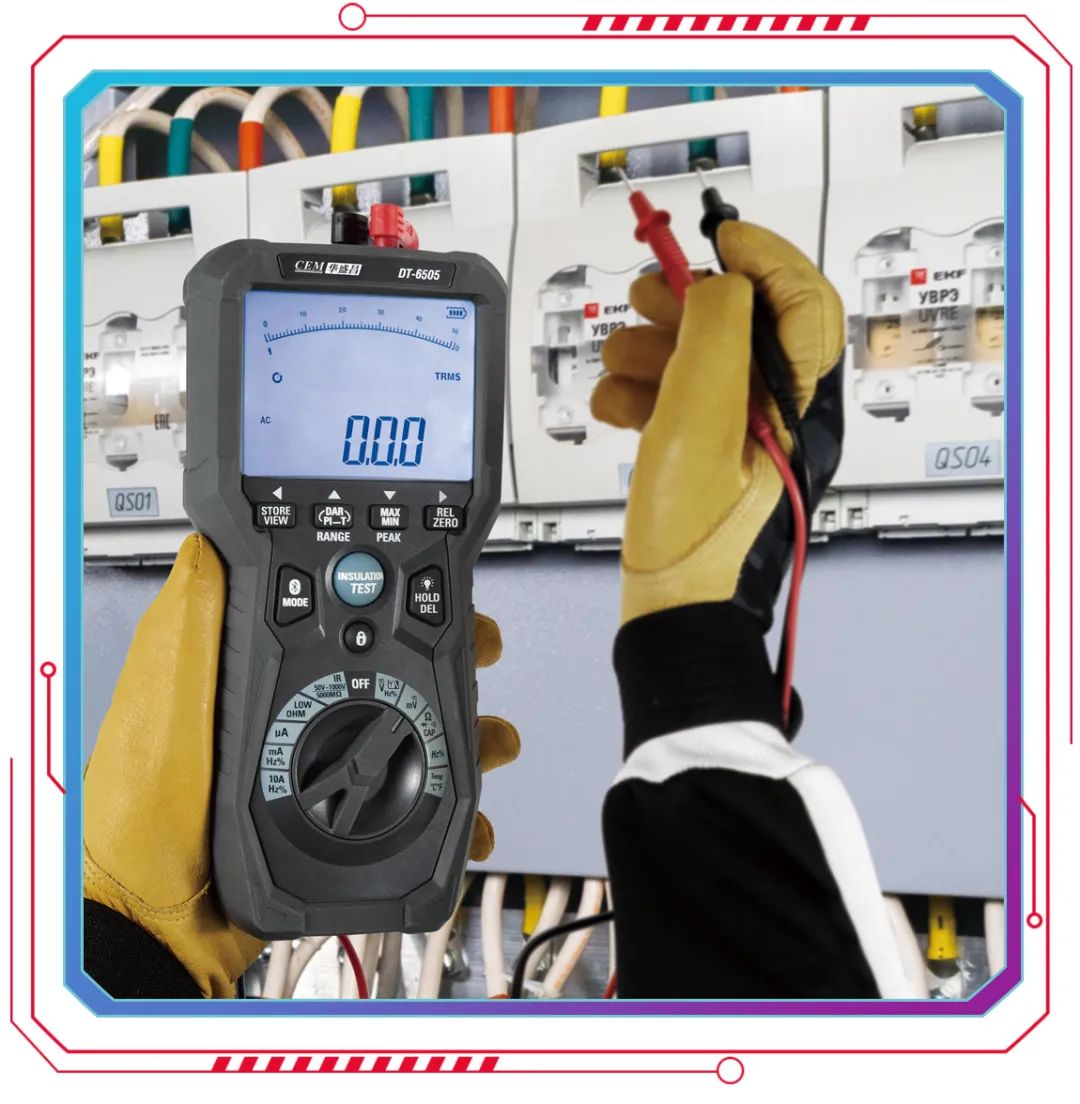
1. Quick Knowledge about CEM
1
The multimeter
The multimeter is a multifunctional testing instrument that integrates the functions of a multimeter, insulation tester, and low resistance measurement. It not only has the basic functions of a multimeter, such as measuring AC and DC voltage, current, resistance, capacitance, and frequency, but also measures insulation resistance and low resistance. This helps verify the quality of electrical equipment, ensure compliance with regulations and standards, determine performance changes over time, and identify fault causes, thereby preventing failures and accidents.
2
Instrument Principle
The multimeter function of the multimeter uses internal circuit modules to convert the measured electrical parameters into signal quantities, which are then displayed on the screen; the insulation tester function tests the insulation quality by applying a test voltage that generates insulation breakdown current on the surface of the electrical equipment, measuring the insulation resistance to determine if the insulation quality is acceptable.
3
Selection Points
1) Accuracy
The higher the accuracy, the more precise the measurement. For small value measurements, a high-precision multimeter is preferred.
2) Resolution
The smallest value change that can be displayed on the screen. High resolution is crucial for weak signals or precise measurements.
3) Signal Characteristics
True RMS measurement is suitable for complex signals, while average value measurement is suitable for pure sine wave signals.
4) Safety
Overload, short-circuit protection, and CAT safety ratings are essential, along with automatic shutdown and audible alarms for safety features.
5) Functions and Expandability
In addition to basic measurements, additional functions such as capacitance, inductance, data logging, transmission, and connectivity with other devices should also be considered.
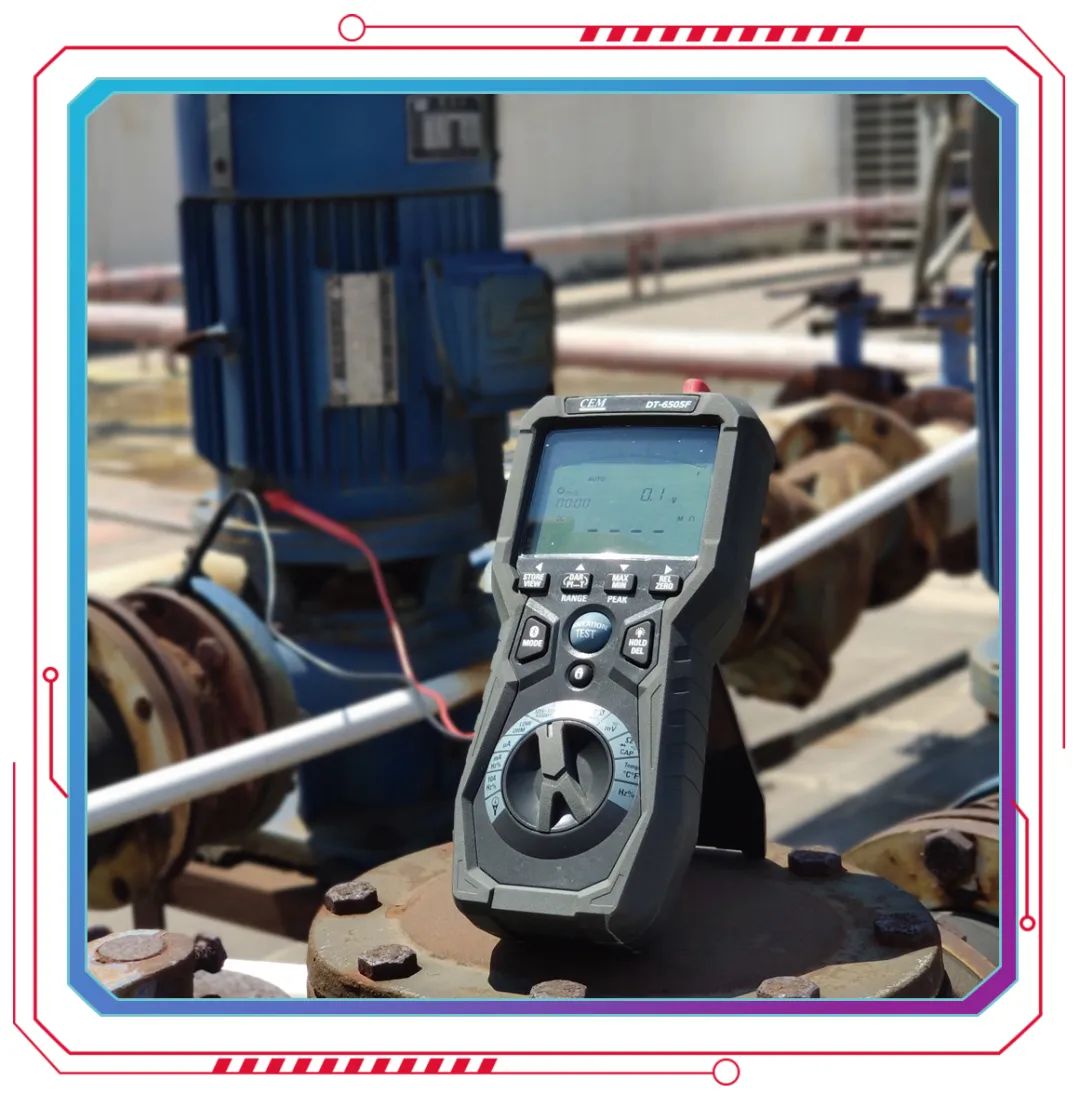
4
Precautions
1) Select the correct measurement range
In manual measurement mode, selecting the correct measurement range ensures the accuracy of the results. If the selected range is too small, it may lead to overload and inability to measure; if the range is too large, it may result in low measurement accuracy.
In automatic measurement mode, the instrument automatically determines the signal size and decides the best measurement range.
2) Correct Wiring
When using the instrument, correct wiring is necessary, paying attention to polarity and the positive and negative terminals of the circuit being measured, as well as the stability and contact of the connections; otherwise, it may lead to inaccurate measurements or damage to the circuit being tested.
3) Prevent Misoperation
When measuring voltage and current, if in manual mode, first set the measurement range to the maximum value, then gradually adjust to the appropriate range. When measuring resistance, the circuit must be powered off first, and the measurement range should be set to the maximum value before gradually adjusting to the appropriate range.
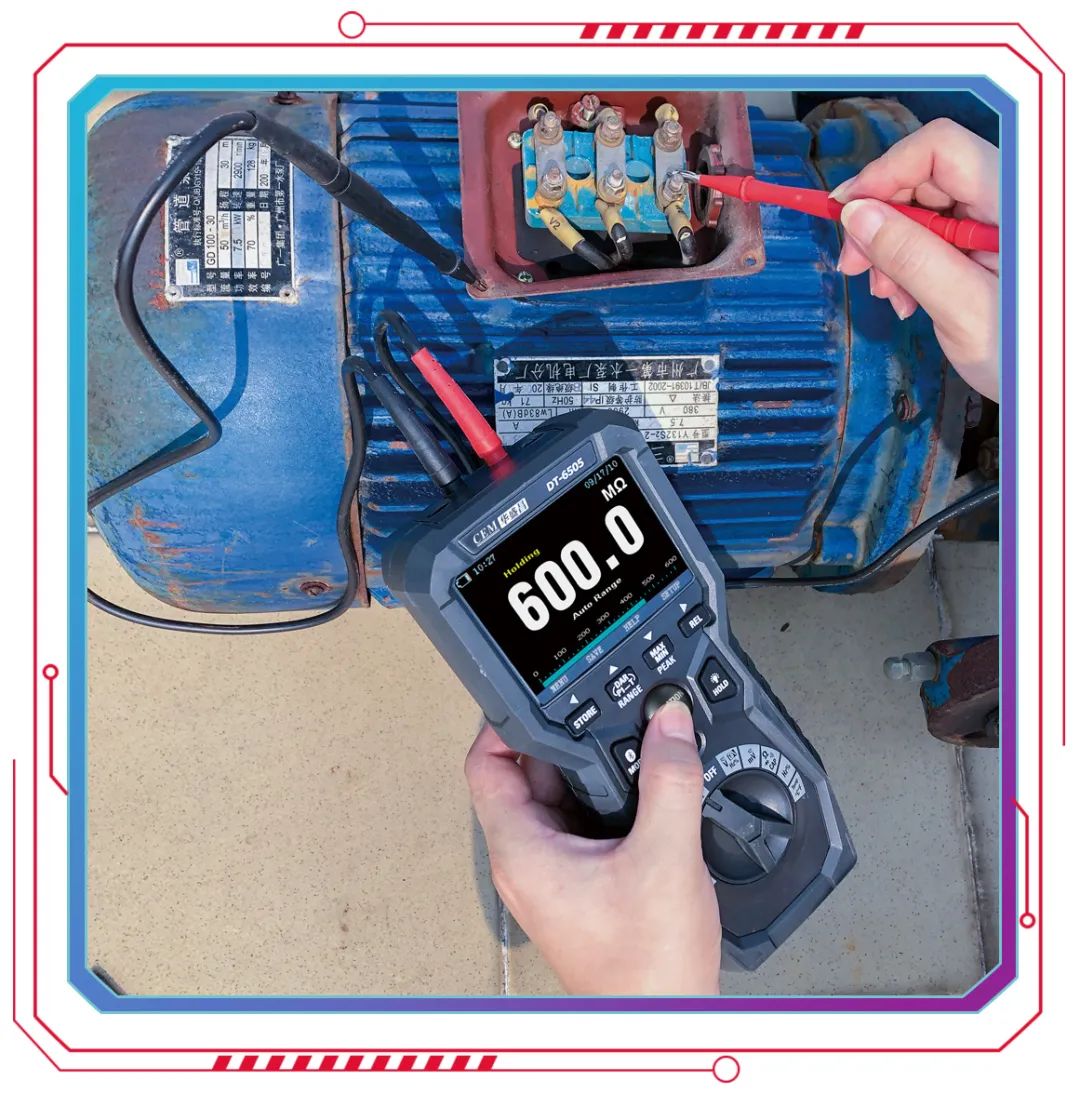
2. Product Recommendations
1
Product Overview
The DT-6505/6505F series is the latest high-precision multimeter from CEM Huashengchang, integrating high-precision insulation testing, low resistance measurement, TRMS multimeter, and high-resolution low measurement into one professional high-precision multimeter. The double-injection molded shell is designed to be sturdy and durable, and the 3.5-inch large display makes data reading easier. TRMS true RMS measurement ensures more accurate measurements, compliant with CAT III 1000V and CAT IV 600V. The 6505F can also be equipped with a 3000A AC current clamp, providing four-in-one measurement functionality for higher measurement efficiency, offering versatility for fault diagnosis and preventive maintenance, widely used in power, electrical, machinery maintenance, operation, and acceptance fields.
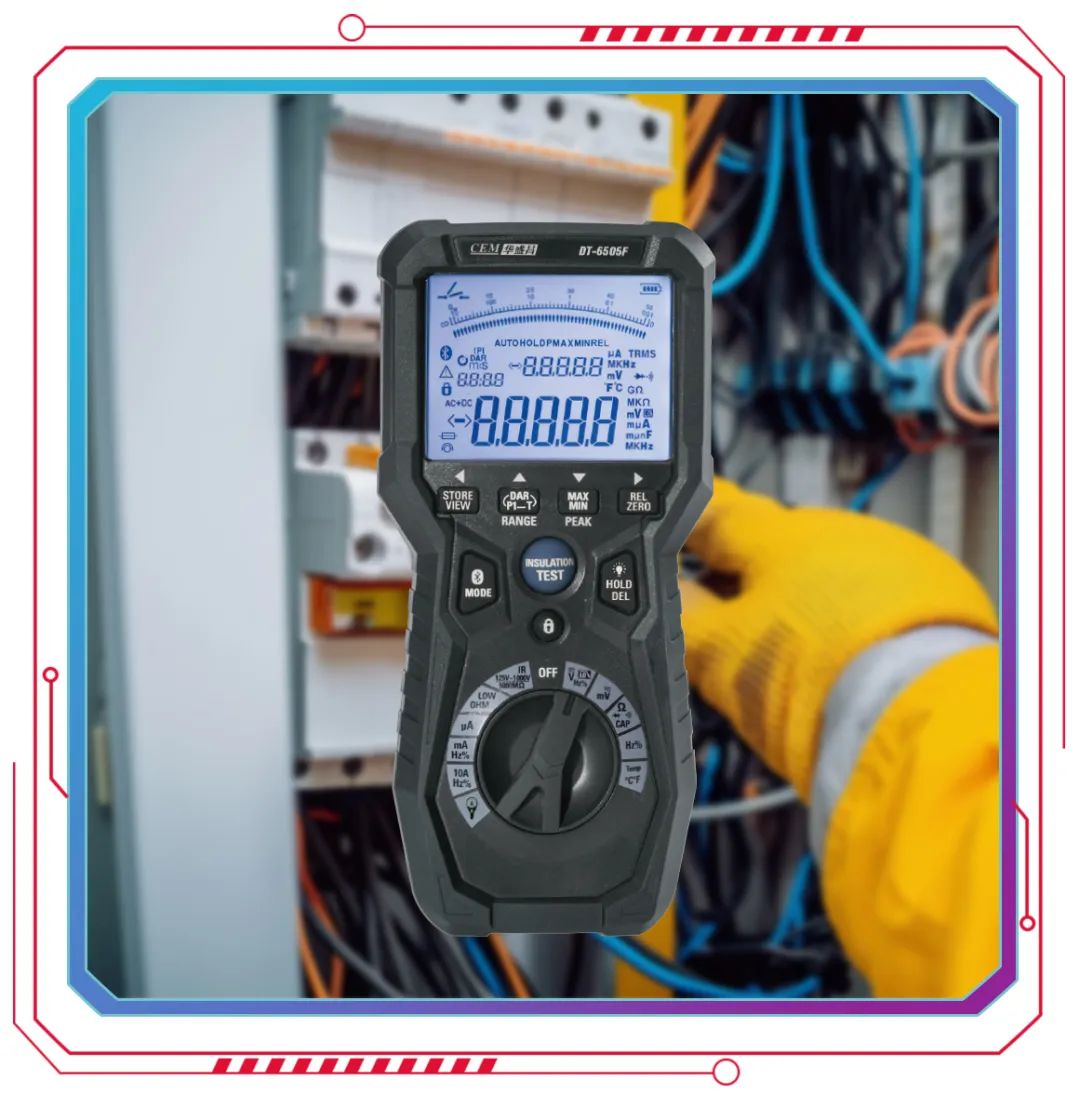
2
Product Parameters
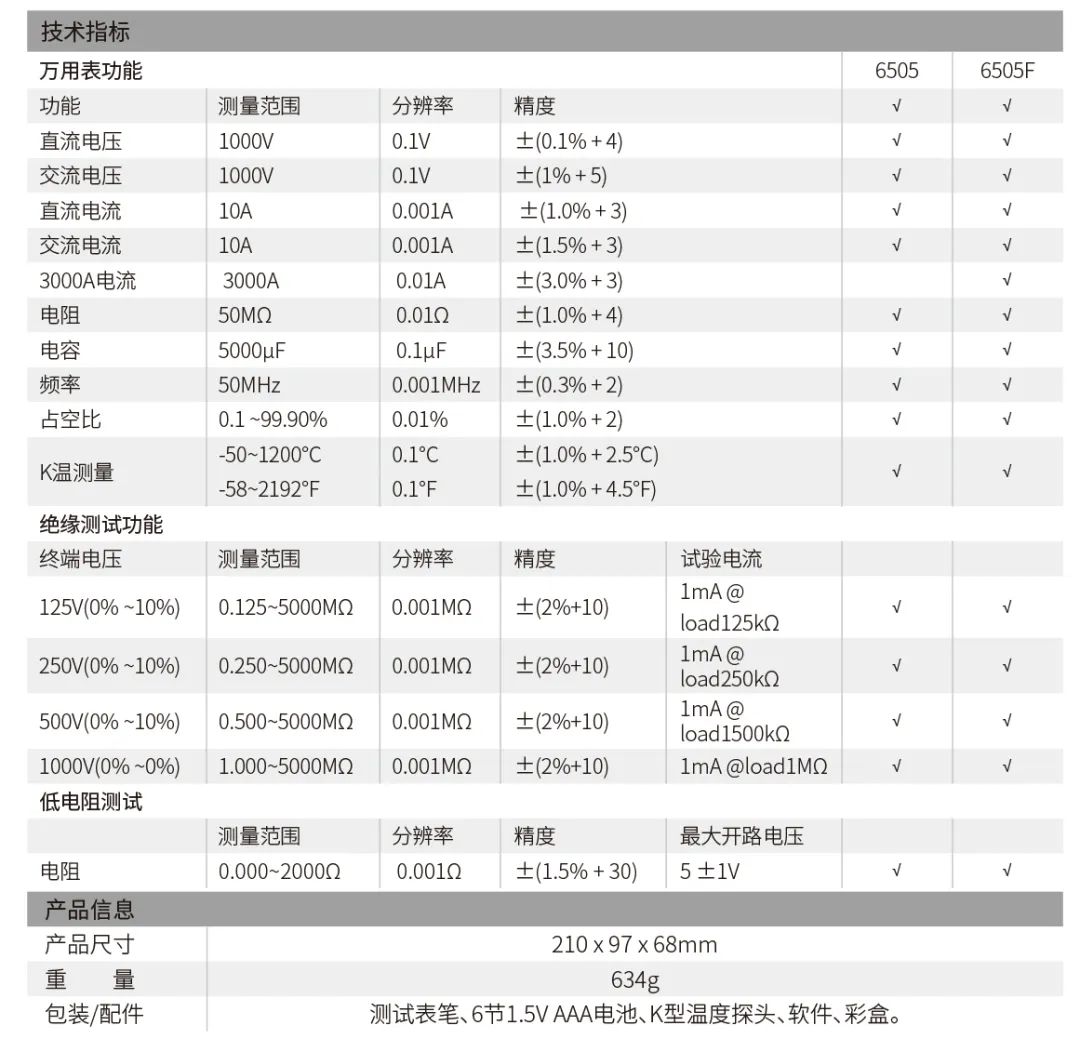
3
Product Advantages
1) Durable: Double-injection molded shell, automatic shutdown feature, durable and energy-saving.
2) Accurate Measurement: True RMS measurement, fully automatic range; capable of K-type temperature measurement and AC 3000A current measurement (DT-6505F); automatic discharge of voltage measurement signals; 200mA continuity measurement and low resistance measurement functions for quick repeat testing comparison.
3) Low-pass Filtering Function: Accurate measurement of variable frequency drive (VFD) voltage.
4) Insulation Testing Function: Insulation voltage testing ranges of 125V, 250V, 500V, 1000V; insulation resistance testing ranges from 0.001MΩ to 5000MΩ.
5) High Safety: Designed to meet CAT III 1000V and CAT IV 600V safety ratings.
6) Convenient and Easy to Use: Data logging, Bluetooth communication, and lock button function make it easier to measure and record data.
4
Product Applications
The DT-6505/6505F series can be widely used in power, electrical, machinery maintenance, operation, acceptance, and other fields.
1) Circuit Testing
Can be used to test voltage, current, and resistance in circuits to ensure normal operation or identify faults.
2) Appliance Repair
Can be used to detect voltage, current, and resistance in electrical devices to determine if they are functioning normally or need repair.
3) Battery Testing
Can be used to test the voltage and current of batteries to determine their status and lifespan.
4) Laboratory Research
Can be used for various laboratory research, such as measuring parameters in circuits, testing sensor outputs, etc.
5) Electronic Engineering Design
Can be used to test the performance and parameters of electronic circuits to assist designers in circuit design and optimization.

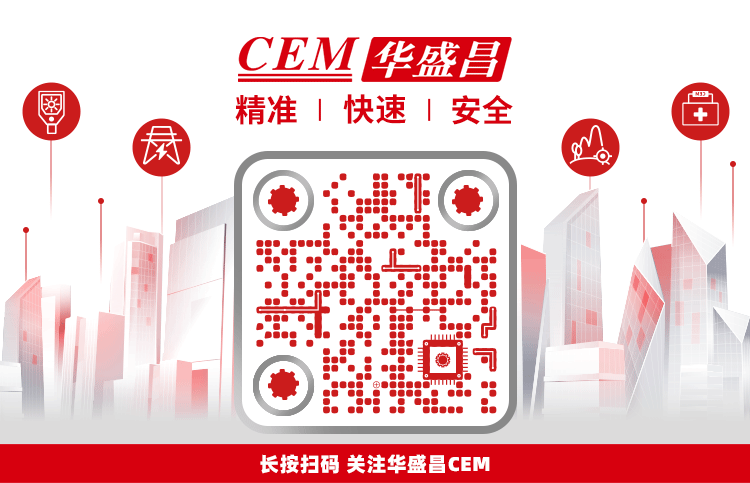
-END-
